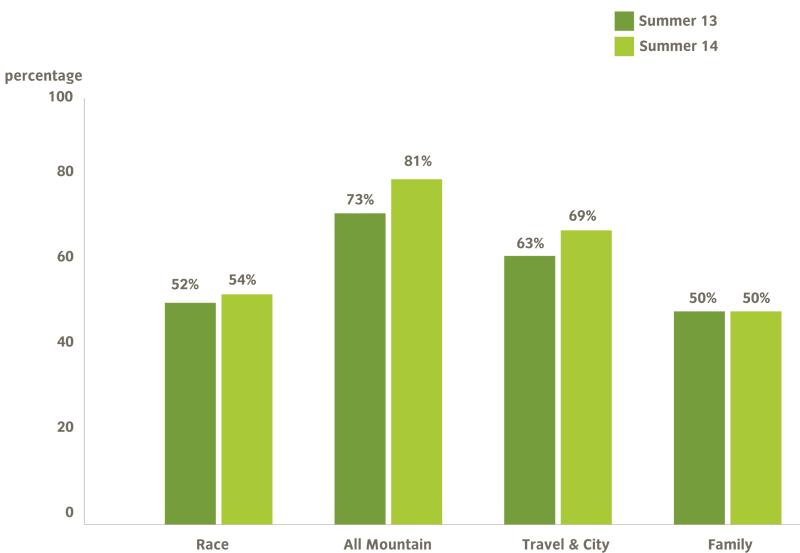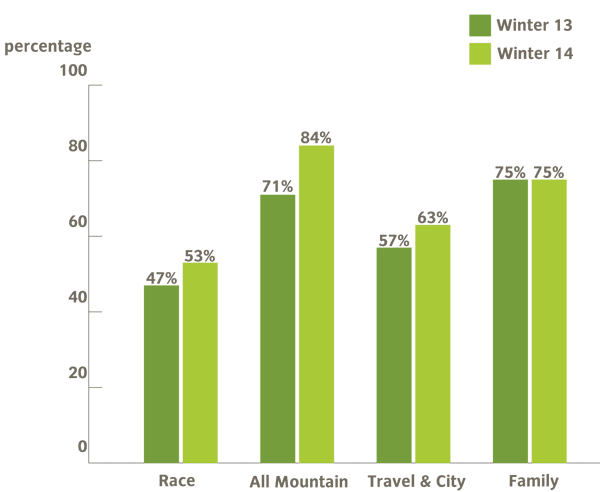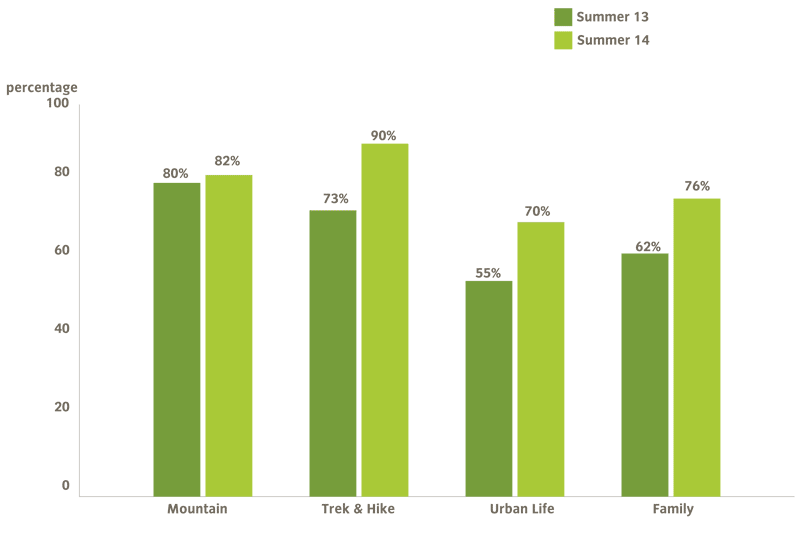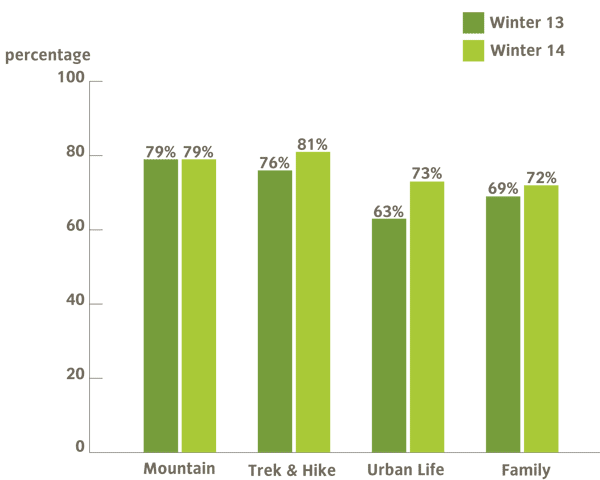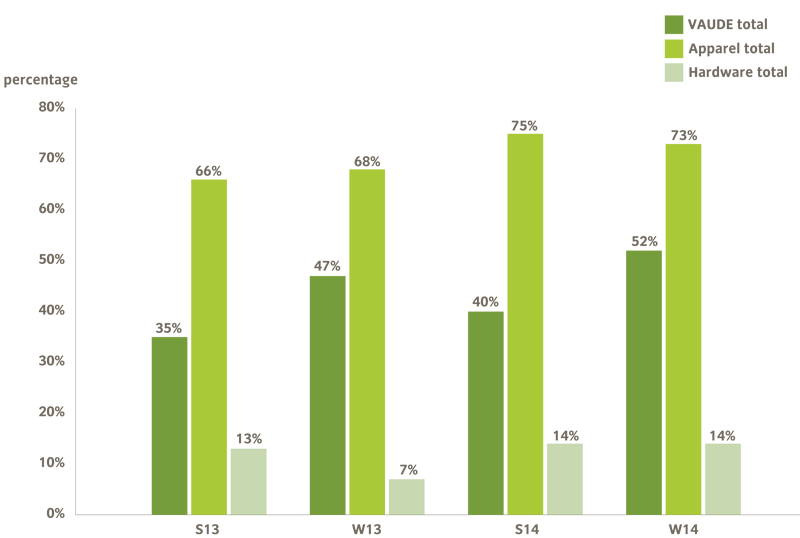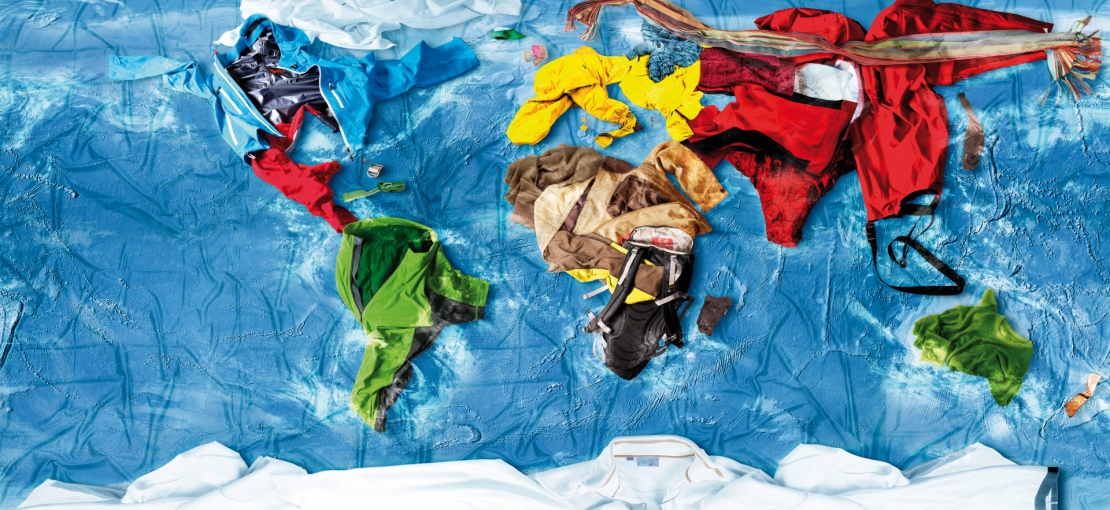
bluesign® percentage is increasing
Proud of our high percentage of bluesign® and Green Shape products
Due to a lack of evaluable data on specific material consumption, we are unable to quote figures for the actual material consumption of production facilities outside of our Tettnang Obereisenbach location. We are reporting here, therefore, on the development of the Green Shape Collection and the bluesign® shares.
In general, a further increase in the Green Shape and bluesign® percentage in the collection is a very challenging goal. Why? It is difficult to maintain the high pace we have had for developing greener products. All measures that were “easily” available have already been implemented in recent years (such as the conversion from conventional cotton to organic cotton.)
Small degree of eco-friendly materials on the procurement market
Now it is becoming ever more difficult to increase the proportion of environmentally friendly products even further, because the amount of eco-friendly, market-ready materials and technologies is still low. This is especially true for backpacks, tents, shoes and accessories.
So we are all the more proud of the role that Green Shape and bluesign® play in our clothing collection.
Renewable materials are preferable
Green Shape and bluesign® does not distinguish between renewable and non-renewable materials. So far, we have not gathered these indicators so we cannot quote figures at this point.
As a rule, we recognize the value of renewable materials in product development and use them as well:
- Organic cotton - see „Organic cotton is better for people and the environment“
- Tencel - see „Making apparel from trees“
- Down - see „Heat storage as light as a feather – one of nature’s marvels“
- Wool - see „Only wool from "happy sheep"" Link auf 4-Wolle
Our concrete goal by 2015
As a bluesign® member, we have committed ourselves to gradually changing our entire textile collection in accordance with bluesign®. Specifically, our goal is to produce at least 80 percent of our apparel according to bluesign® by 2015.

